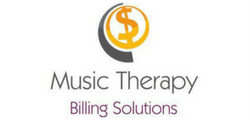An article was posted last week in U.S. News and World Report. It summarized a study performed in London where a group of researchers studied how music can help visual neglect. (Visual neglect occurs when a person has had damage to one side of their brain, as with a stroke, and cannot attend to or be aware of one side of their visual field. For more information, go here. I know it’s Wikipedia, but this is not a research paper and they provide a good overview:-)
So these researchers had three people suffering from neglect perform visual tasks in three different conditions: 1) while listening to music they preferred, 2) while listening to music they did not like, and 3) while sitting in silence. They found that while listening to music they liked, the participants performed better on the visual tasks. This did not happen in the other two conditions.
To the researchers, this suggested that the music they liked stimulated the emotional areas in our brain, which then helped the brain process other information (e.g. the visual information) more efficiently.
Hmmmm…
I’m still trying to wrap my brain around this one. This is an intriguing study, but I’m not convinced about their conclusion. Yes, music taps into our emotions, we all know that. But the idea that simply being happier would help your brain process visual information? I don’t know…
I DO know that listening to music stimulates the areas in our brain responsible for arousal and attention. Have you ever sung to a baby? They will turn their head to find you and watch you as you sing (arousal and attention in action!). I also know that music stimulates both sides, or hemispheres, of our brain. Maybe the music was acting like a primer to the damaged part of the brain, making it easier for it to work and process information. Of course, how would you then account for the fact that the participants only performed better listening to music they liked?
Another thought – the article also says that “this may improve the patient’s awareness by giving the brain more resources to process stimuli.” This may be silly, but could it be like smiling and frowning? You have probably heard that it takes more muscles to frown than it does to smile. Well, maybe it takes fewer brain resources to feel a happy emotional state than it does to feel a neutral or negative emotional state. Maybe being in a happy emotional state makes it easier for your brain to work on other tasks?
Like I said, I am still trying to wrap my brain around this one. What are your thoughts? Please share them!
P.S. If you would like to download a pdf of this article, click here.


 orcid.org/0000-0001-8665-1493
orcid.org/0000-0001-8665-1493






{ 2 comments… read them below or add one }
I worked with clients who had left-side neglect following a stroke. I used music to help them look towards the left side and reach for things on the left side. My guess is their emotional state affected their motivation and cooperation with the therapy, but the music stimulated their brain, including the right hemisphere, which allowed them to become more aware of that side, rather than the stimulation of emotions. So when I use that technique, I use it with the understanding that the brain is stimulated on the left side by processing music, priming it for attention to that side.
Thank you, Janice! In addition, maybe providing an auditory input on the affected side helps their brain become aware of that side, even if they do not yet “see” it. Auditory stimuli is processed differently than visual stimuli, so maybe that, too, is at work.
You must log in to post a comment.